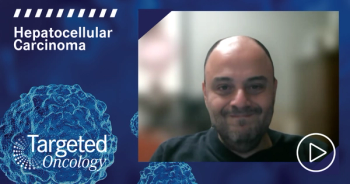
Amit Singal, MD: Next Steps for a uHCC Patient with Progressive Disease
What are the most important factors to consider in determining the next steps for this patient with progressive disease?
Even though he has limited tumor burden to the liver, he now has progressed on chemoembolization. Given the fact that he's now progressing with this therapy, it's reasonable to now consider switching to an alternate agent. That's the first thing, exactly how he's responding to the therapy.
CASE 2 : Unresectable Hepatocellular carcinoma (uHCC)
Richard G is a 64-year-old Caucasian night club owner from New Orleans, Louisiana with a history of alcohol and substance abuse, and alcohol-induced cirrhosis.
In April of 2012 the patient was diagnosed with unresectable hepatocellular carcinoma (uHCC), with a 4.6 x 4.3 cm mass detected in segment 6 of cirrhotic liver and evidence of macroscopic vascular invasion and extrahepatic spread to regional lymph nodes
TACE was recommended by the multidisciplinary team and the patient underwent a total of 2 TACE procedures, with a partial response observed (30% decrease in sum of greatest unidimensional diameters of target lesions compared to baseline) by RECIST criteria
In July 2013, follow up laboratory values were:
Albumin: 3.9 g/dL;
Bilirubin: 0.7 mg/dL
Alpha fetoprotein: 53.2 ng/mL
Platelets: 179,000
AST: 370 IU/mL
ALT: 189 IU/mL
The patient is classified as Child Pugh Class A at the current visit, with, with a MELD score of 10, and the patients ECOG performance status is 1
Contrast-enhanced MRI showed disease progression, with increases observed in diameter of multiple target lesions








































